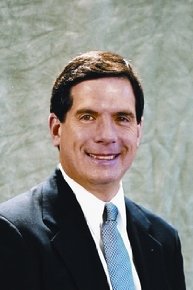 More and more Christians are choosing to worship in larger congregations. Thom Rainer, president and CEO of LifeWay Christian Resources, recently shared seven trends relating to American megachurches. His list (for another trend originating from the same data Rainer relies upon, consider reading my recent post) begins with a trend that has an impact that reaches far beyond megachurches (typically defined as congregations that average 2,000+ in weekend worship attendance):
More and more Christians are choosing to worship in larger congregations. Thom Rainer, president and CEO of LifeWay Christian Resources, recently shared seven trends relating to American megachurches. His list (for another trend originating from the same data Rainer relies upon, consider reading my recent post) begins with a trend that has an impact that reaches far beyond megachurches (typically defined as congregations that average 2,000+ in weekend worship attendance):
Further consolidation of people attending church in megachurches and other large churches. There continues to be a shift of members and attendees from smaller churches to larger churches, particularly megachurches. While megachurches account for less than one-half of one percent of all churches in American, more than ten percent of church attendance is concentrated in these churches. We see no signs of this consolidation abating. For example, more than 50 percent of church attendees attend the largest 10 percent of churches.
Susan Beaumont, in her recent book on large congregations, offers another helpful way of understanding what this really means. She notes that while most congregations are small, most people are in much larger congregations — the average person is in a congregation of 400 with a budget of $280,000 (p.6).
For those who prefer a visual image, consider this chart showing the distribution of congregations in one denomination (the PCUSA) by size. After reviewing it imagine what it means for half of all of the people these congregations represent to be gathered in just the largest 10% of the congregations.
So What?
Much has been written about the changing landscape of religion in America, especially Christianity. Few, if any, trends will have more practical implications for existing congregations than the continued movement of people from smaller to larger congregations.
- Do you prefer to be a part of a smaller or larger congregation? Why?
- Over the next decade, is your congregation likely to benefit from or shrink as a result of the movement of people from smaller to larger congregations? How is the congregational leadership working to leverage or overcome this trend?
- What are some of the unique challenges facing small congregations now and in the future? What are some of the unique opportunities for these communities of faith?